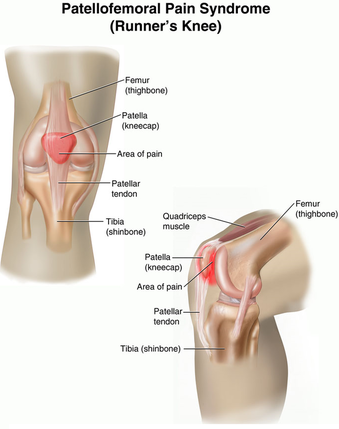What is it?
Runners’ knee is a common disorder characterized by pain at the front of the knee during activities that require frequent and repetitive bending of the knee. The knee joint is composed of the thigh bone, (femur) and leg bone (tibia) and a small floating bone at the front, commonly known as the kneecap (patella). The interaction between these bones allows for smooth movement of the knee as it bends and straightens.
During movement, the kneecap sits in a groove at the front of the knee and acts as a mechanical see-saw.This protects the knee joint and improves the efficiency of the muscles working to move it.
If the kneecap does not move within its groove normally. This can cause irritation and pain of the underlying tissues, creating what is known as patello-femoral pain syndrome.
What causes it?
The quadriceps muscle straightens the knee and is made up of 4 individual muscles, all ofwhich share a common attachmentto the kneecap.The quadriceps worktogetheras a group, with some pulling to the left and others to the right as they straighten the knee. If one side of the quadriceps is over or under developed compared to the rest of the group, their pull on the patella changes, causing the patella to move out of place as it pulled along in its groove. Over time this can damage the bony surfaces underneath the kneecap, causing irritation and pain.
How can physiotherapy help?
After examination your physiotherapist can determine the cause of the pain. They may perform some muscle releases and advise you of specific stretches to perform. If there is a strengthimbalance, you will be given specific exercises aimedat strengthening the appropriate muscle to reducingany imbalance.
Muscular imbalance at the hips or lower back, or poor biomechanics of the lower limb and foot can contribute to the dysfunction in the quadriceps muscleand is an important part of any successful treatment.Your physiotherapist may suggest you change your footwear or add an orthotic to your shoe to improve the support ofyour foot and lower limb This may be a permanent or temporary change.
Other strategies your physiotherapist may try include patella strapping, dry needling, or trigger point therapy. Surgery isconsidered a last resort following a period of physiotherapy management.
None of the information in this newsletter is a replacement for proper medical advice. Always see a medical professional for advice on your individual injury.

